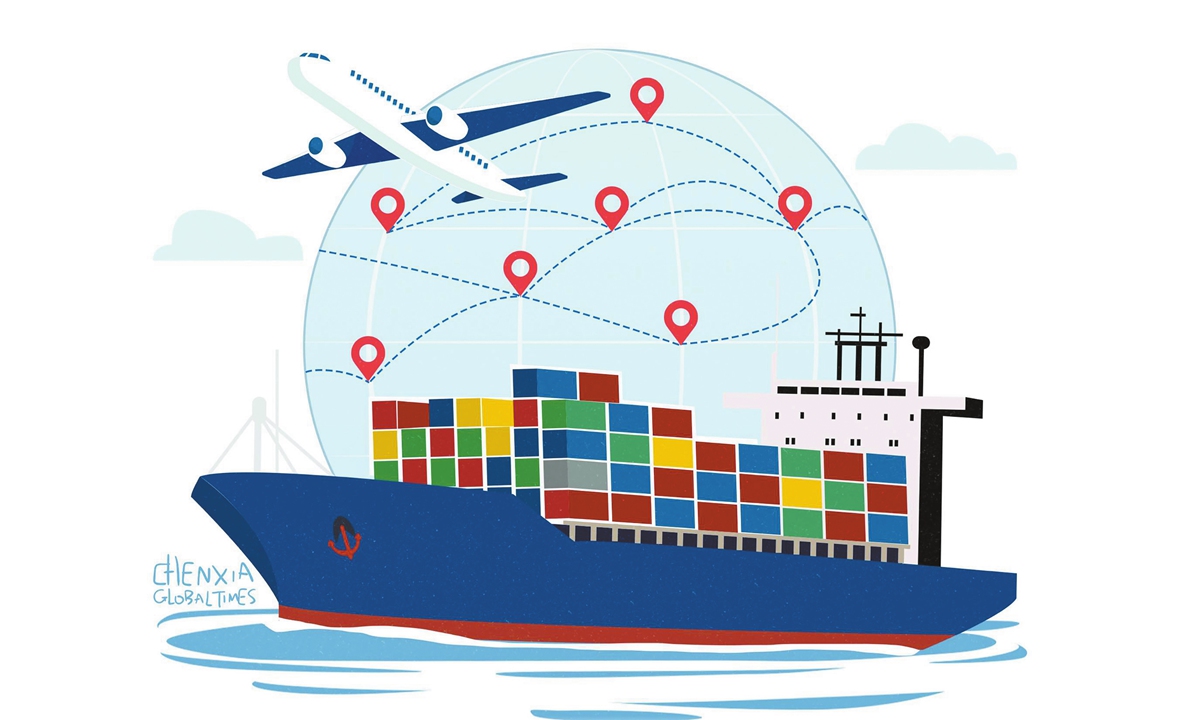
Illustration: Chen Xia/GT
Recently, the international public opinion has noticed that as Washington threatens to impose punitive 60 percent tariffs on Chinese goods, Beijing's measured response speaks volumes about its strategic preparedness and economic resilience.
Wang Shouwen, the China international trade representative and vice minister of commerce, clearly stated on November 22 that China is capable of resolving and withstanding the impact of external shocks. He added that China is ready to engage in dialogue, expand areas of cooperation and manage differences with the US to promote steady and sustained development of bilateral economic and trade relations. And that will be based on mutual respect, peaceful coexistence and win-win cooperation, Wang added.
China-US economic and trade relations have experienced historic turmoil in recent years, testing how the two great powers can coexist. The principles that Wang highlights are crucial. While foreign media have largely focused on China's willingness to engage in dialogue with the US, they have overlooked the principles mentioned by Wang - mutual respect, peaceful coexistence and win-win cooperation.
Resolving the trade balance issue is not about forcing unilateral concessions, nor can it be solved by imposing economic strikes on one another. If it is resolved through "war," it will undoubtedly result in a lose-lose situation.
While China faces genuine challenges, its calm demeanor isn't merely bravado, it relies on its fundamental strengths and strategic foresight. Beijing has systematically reduced its vulnerability to US pressure through a comprehensive trade diversification strategy and domestic market development. The numbers tell the story: China's exports to G7 nations have dropped from 48 percent in 2000 to less than 30 percent today, while its share of global exports has increased to 14 percent. This shift isn't accidental. China has methodically built alternative trade networks through the Belt and Road Initiative and strengthened ties with ASEAN and EU markets.
Beijing's toolkit for responding to potential tariffs is both sophisticated and targeted. Rather than resorting to dramatic measures like selling US Treasury bonds or currency devaluation, China will likely employ precise countermeasures. Moreover, China's domestic market of 1.4 billion consumers provides a powerful buffer against external pressures.
China's economic policy of promoting the expansion of domestic demand and seeking new markets has been accelerating due to external pressures.
Beijing's focus on "dual circulation" offers a viable path forward. The challenge will be executing this transition effectively. China's strength lies in its ability to learn from experience. As Wang pointed out, history has shown that raising tariffs on Chinese goods cannot resolve the tariff-imposing country's trade deficit; instead, it leads to higher prices for imported products and inflation, with the burden ultimately falling on consumers. The first trade war demonstrated that tariffs often harm the imposing country's consumers more than their intended targets.
A 60 percent tariff on all imports from China would undoubtedly cause disruption. However, Beijing's combination of policy tools, market size and strategic patience suggests it's well-positioned to absorb such shocks while continuing its economic evolution. The international community should note that China's calm in the face of tariff threats isn't just diplomatic posturing - it reflects a fundamental shift in global economic dynamics.
As China continues to diversify its economy and strengthen its domestic market, the effectiveness of tariffs as a policy tool may be reaching its limits.




